Analyzing psoriasis skin disease in HSA KIT deep learning software is able to detect a skin that caused by psoriasis, Psoriasis is a chronic autoimmune disease that primarily affects the skin, causing it to develop red, scaly patches, Specialists at HS Analysis are able to use advanced deep learning AI software to diagnose this disease to use it in clinics, institutions and health care facilities.
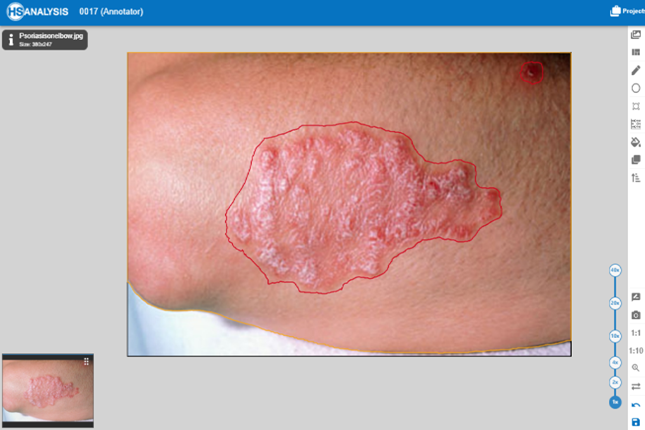
Knowing your psoriasis type can help your healthcare provider create a treatment plan. Most people experience one type at one time, but it is possible to have more than one type of psoriasis.
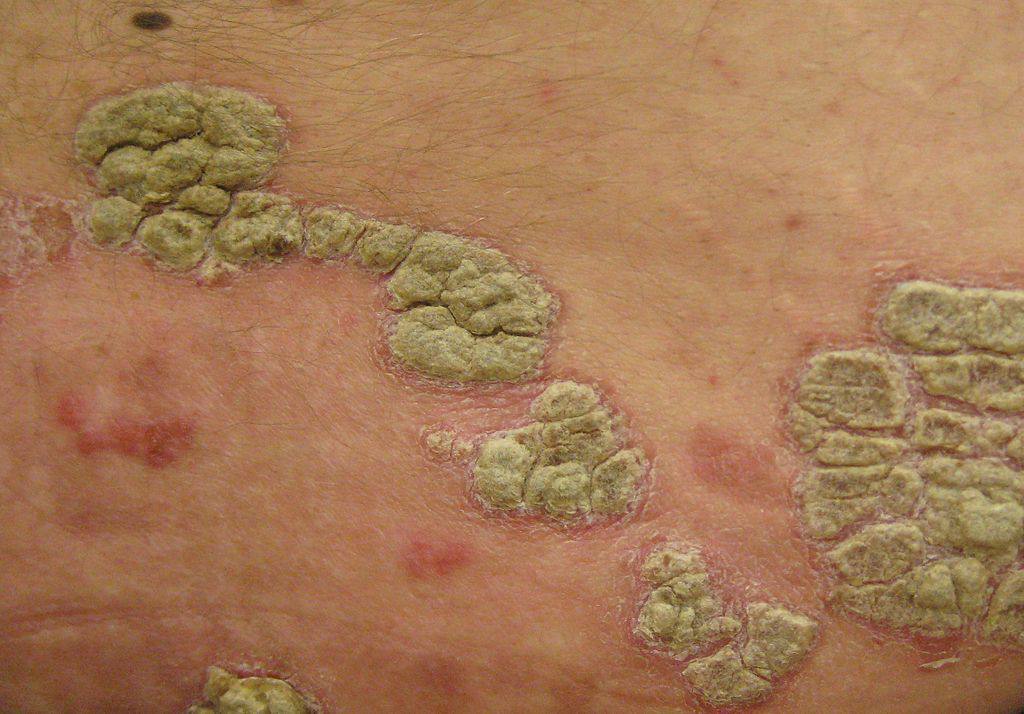
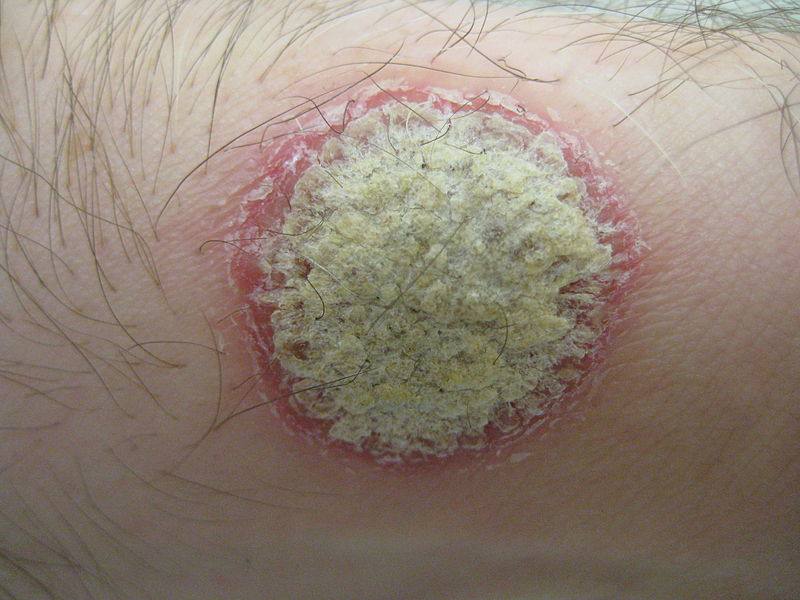
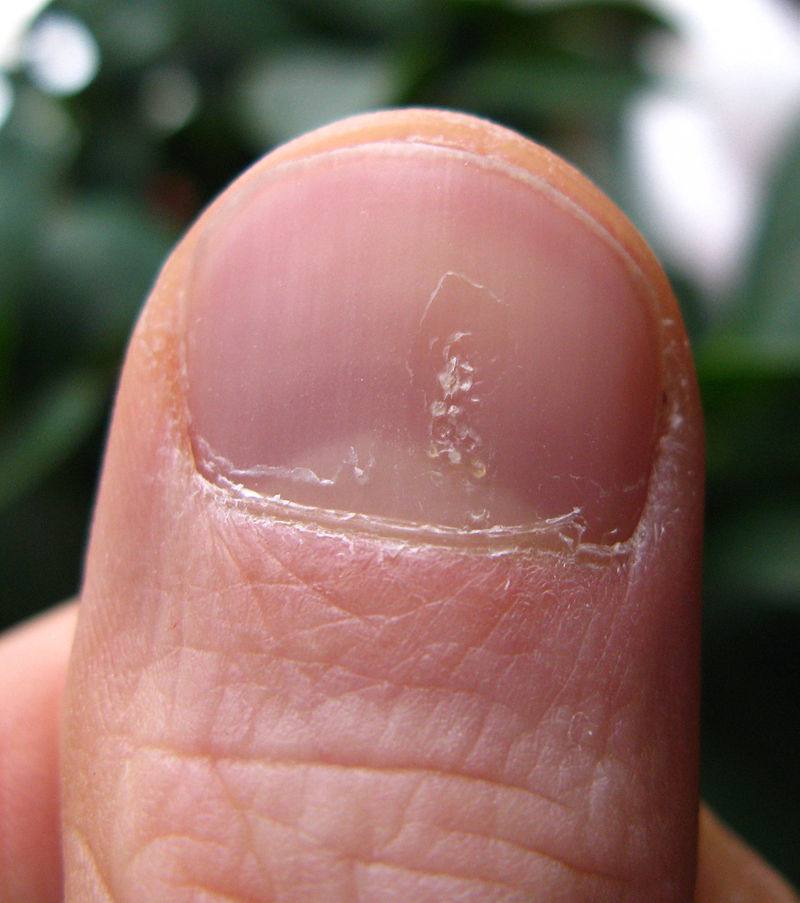
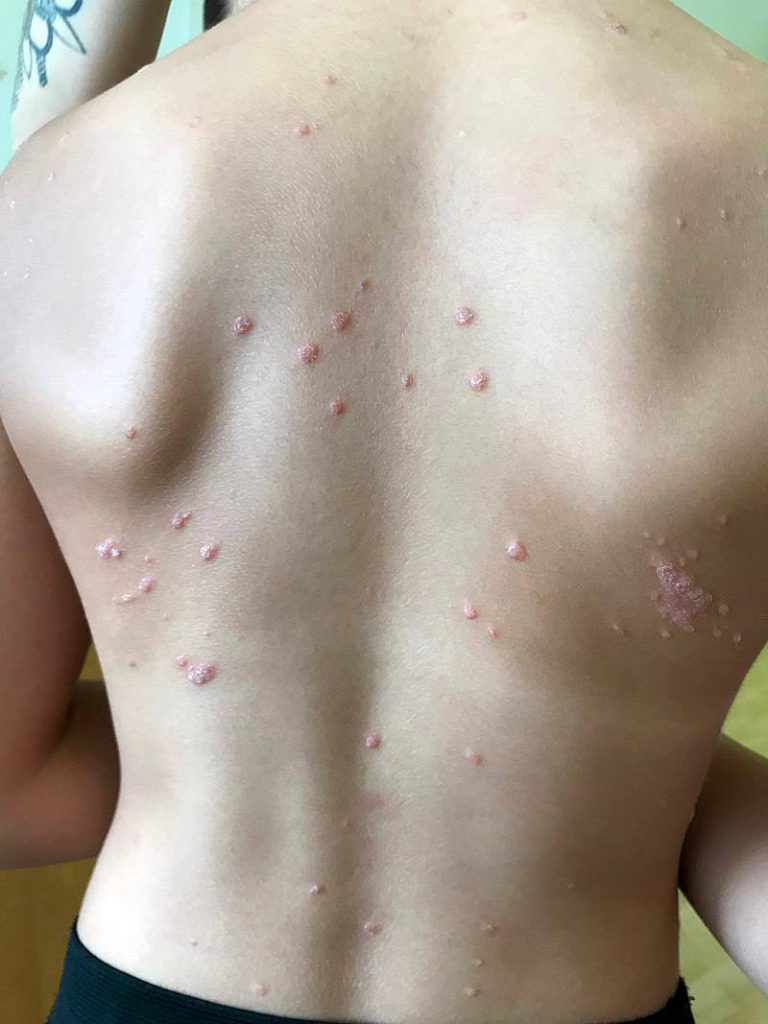
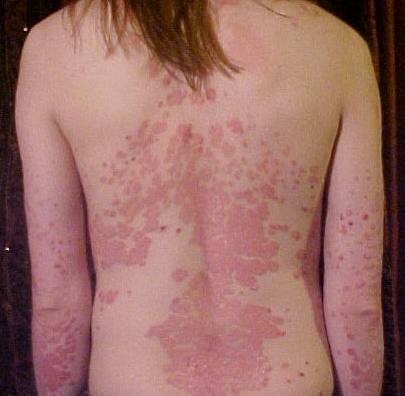
Artificial intelligence
HSA kit works on the development of AI machine and deep learning methods which refers to the simulation of human intelligence in machines that are programmed to perform tasks that typically require human intelligence. AI systems are designed to perceive their environment, reason about it, and take appropriate actions to achieve specific goals. Deep learning can be utilized to define or identify skin diseases by leveraging its ability to learn intricate patterns and features from large datasets.

The HS Analysis‘ touch:
One key technology of automatic interpretation of tissue samples in the HS Analysis software is the latest artificial intelligence. We are developing a DL in the cloud to analyze smartphone images in 2D, but also surface features (heatmaps and thus 3D) with CNNs. we have the ability to create ground truth data and train models for both detection of skin and detection of plaques.
How we develop our AI: Firstly, we collect real data images and annotate them based on colors for the skin we use yellow and we annotate all the shown skin areas in the picture to get the best possible AI model with minimum mistakes.
Examples on skin AI annotations:
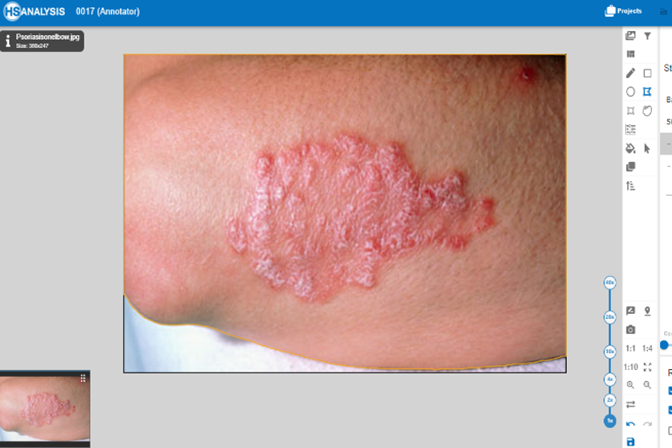
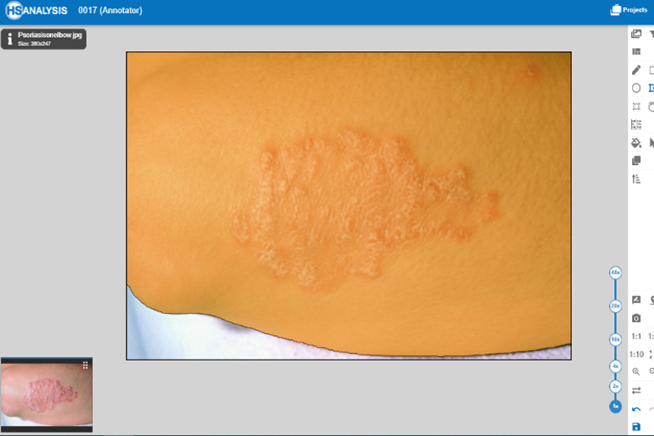
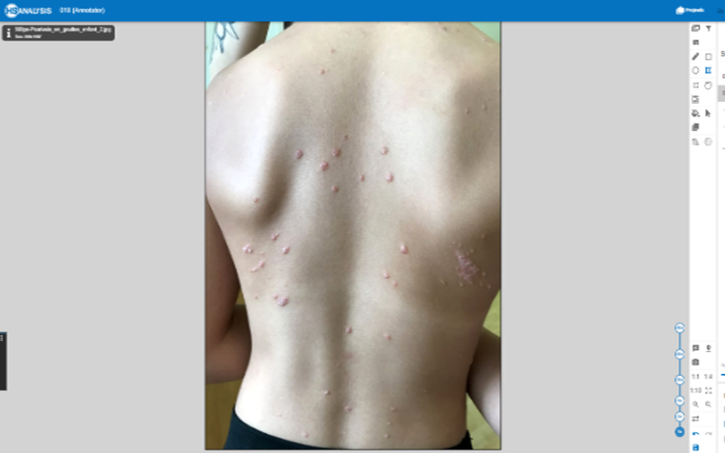
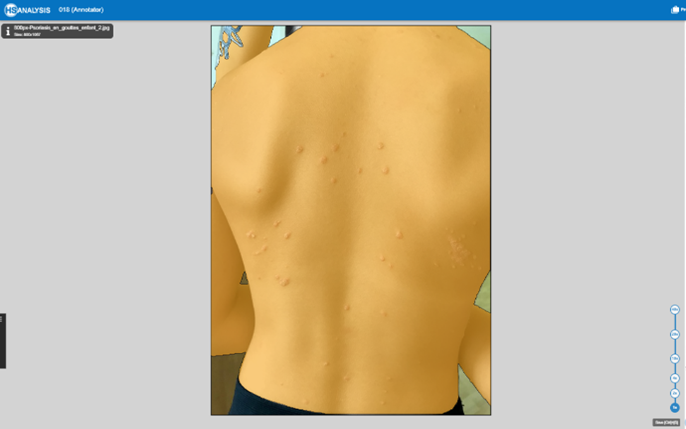
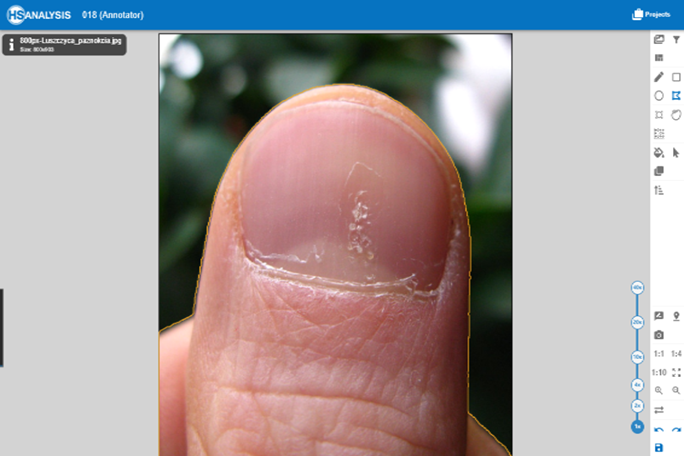
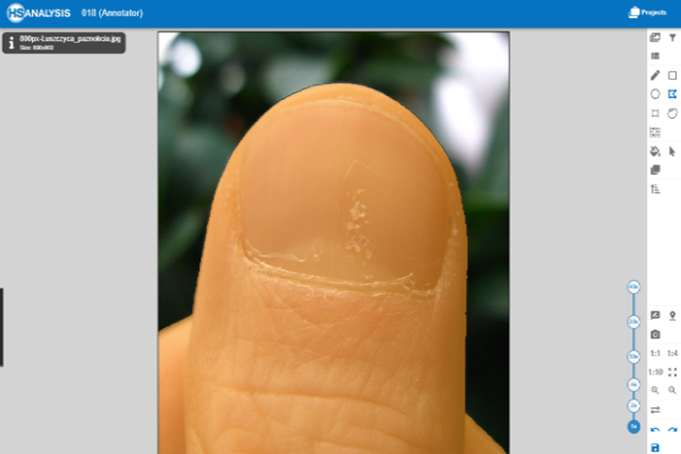
The next step Is we annotate inflamed areas on the skin using red color and then we train the model too be able to automatically detect the plaques.
Examples on plaques AI annotations:
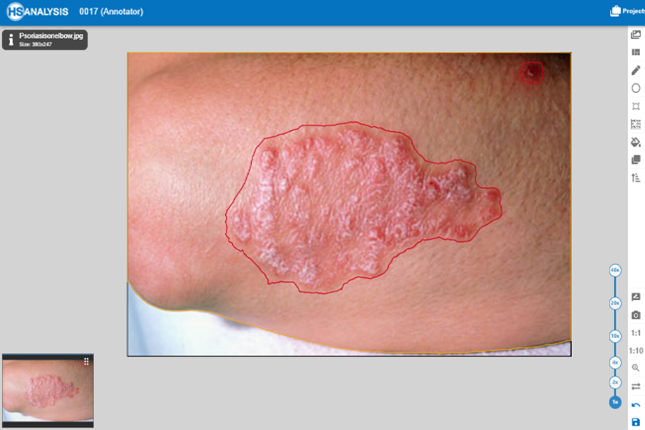
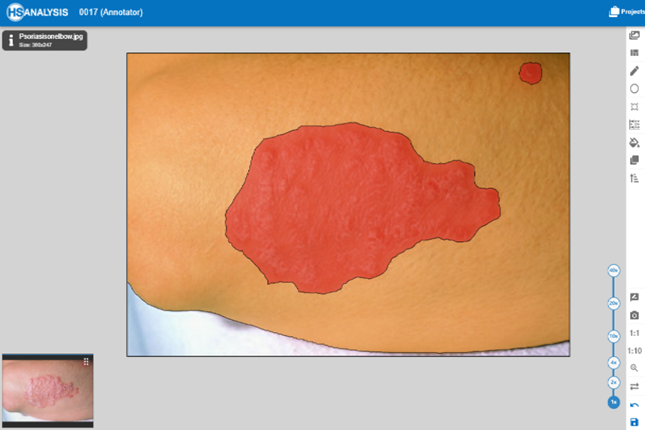
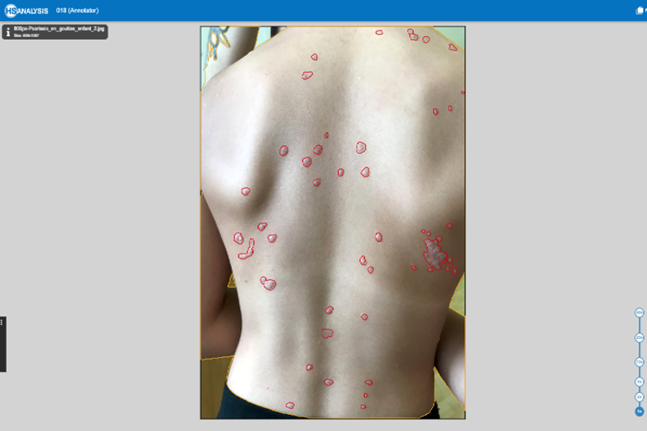
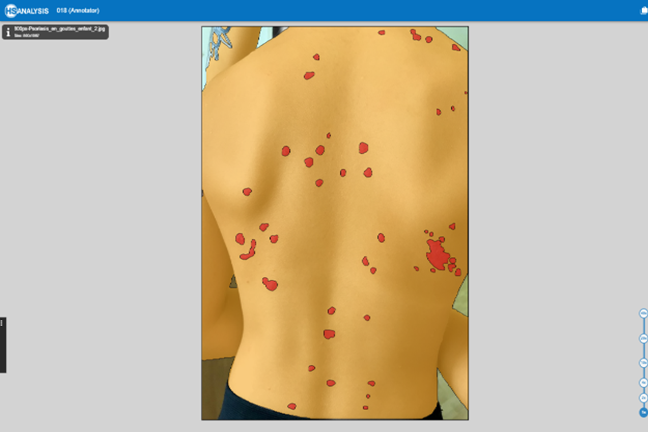
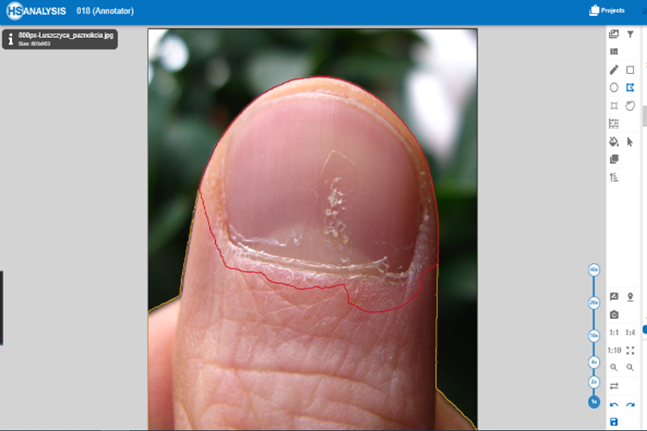
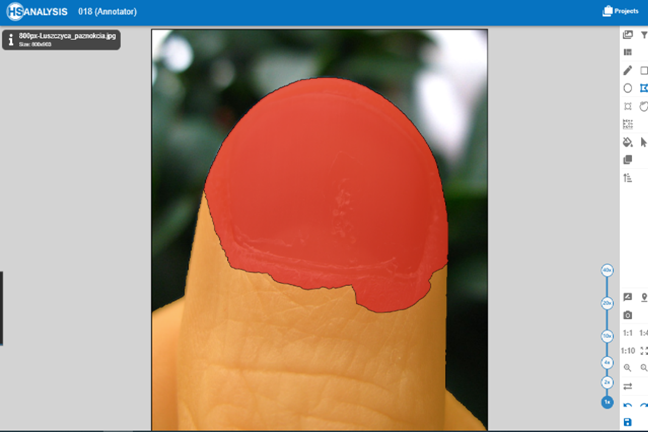
Model training :
We train each model individually Then we tests and optimize the models, we use our testing dataset to evaluate how well our AI model performs on the task of distinguishing psoriasis from other skin conditions and normal skin. The datasets consist of various images, each image is detected 100 times ,we select segmentation model type which detect object and draw exact border around objects the structures depends on the AI that we want which are skin or inflamed , and we use (horizontal-flip, vertical-flip, and rotation) in order to not change the meaning of the image, and we train the newest model version based on the existing versions.

The Future Of HSA KIT AI’S
A very important aspect of this project is looking to improve the AI model in the future and there are a lot of ideas that we can integrate and develop to improve the quality and versatility of the AI model to include and be able to detect the skin and plaques for many different photos and different types of noise and artefacts and get a better and more accurate result despite these artefacts. We take a look at the challenges and artefacts and find there are different types of them and the task is for the AI to be able to detect the correct targets despite these artefacts being present in the image.
Here are some of these Types of noise or artefacts that we want to improve on:
1-Image blurring: blurring is one of the most common things that will hinder the AI from correctly detecting and solving this problem will be very helpful to detect skin and plaques from other background objects.
2-Lighting and Shadows: Another very common artefact is the light and shadow presence and the different contrast that happens on the image that detours the detection.
3-Out of focus images: Almost all of the images that were used to train the Al model are from smartphones and sometimes the patient sends images that are out of focus.
4-Edges and boarders accuracy: To have an excellent and highly accurate model annotating the edges and boarders accurately is very important to not include any other unwanted objects or pixels that will affect the model accuracy.
5-Unwanted images: Having the ability to automatically exclude images that are not useable to annotate be it by not including any skin or having the identity of the patient visible and having inappropriate or private images being sent.
Being able to beat these challenges in the future will certainly make the AI model extremely accurate and having state of the art annotations.
Explainable Artificial Intelligence (xAI)
Explainable Artificial Intelligence (xAI) is a field focused on developing AI systems that can provide understandable explanations for their decisions and actions. Unlike traditional AI models that often operate as „black boxes,“ xAI aims to enhance transparency and interpretability in AI systems. By incorporating techniques such as rule-based systems, decision trees, attention mechanisms, or generating textual or visual explanations, xAI enables users to comprehend the reasoning behind AI outputs. This has significant implications for various sectors, including healthcare, finance, and law, where the ability to understand AI decisions is crucial. With explainability, experts can validate and verify AI models, identify biases or errors, and ensure fairness and ethical standards are maintained. Moreover, xAI empowers individuals to make informed decisions based on AI outputs, fostering trust, accountability, and the responsible use of AI technologies in our daily lives.
This video shows how we train the skin and plaques models and test it.
